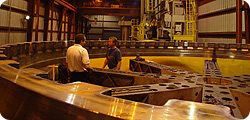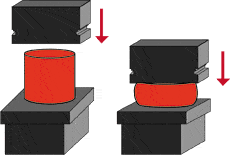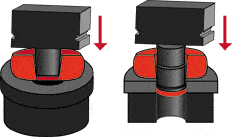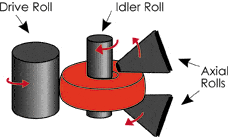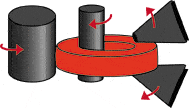The production of seamless forged rings is often performed by a process called ring rolling on rolling mills. These mills vary in size to produce rings with outside diameters of just a few inches to over 420″ and in weights from a single pound up to over 400,000 pounds.
The process starts with a circular pre-form of metal that has been previously upset and pierced (using the open die forging process) to form a hollow “donut”. This donut is heated above the recrystallization temperature and placed over the idler or mandrel roll. This idler roll then moves under pressure toward a drive roll that continuously rotates to reduce the wall thickness, thereby increasing the diameters (I.D. and O.D.) of the resulting ring.
Seamless rings can be produced in configurations ranging from flat, washer-like parts to tall, cylindrical shapes, with heights ranging from less than an inch to more than 9 feet. Wall thickness to height ratios of rings typically range from 1:16 up to 16:1, although greater proportions can be achieved with special processing. The simplest, and most commonly used shape is a rectangular cross-section ring, but shaped tooling can be used to produce seamless rolled rings in complex, custom shapes with contours on the inside and/or outside diameters.

